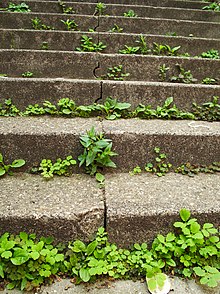**Historical Evolution of Weed Concept**:
– Proto-weeds observed at archaeological sites.
– Weed control concepts emerging in ancient Roman writings.
– Evolution of the term ‘weed’ from Old English.
– Definition of weeds as noxious plants in the 16th century.
– Development of laws mandating weed control in the 17th century.
**Ecological and Agricultural Impact**:
– Weeds overlapping with ruderal and pioneer species.
– Agricultural impact causing major yield losses.
– Invasive species affecting biodiversity negatively.
– Co-evolution of weeds with human crops.
– Importance of weed control methods like hand cultivation and herbicides.
**Cultural Perceptions and Adaptability**:
– Historical associations of weeds with moral degradation.
– Weeds as public health hazards in urban areas.
– Legal precedents for weed control in American cities.
– High adaptability of weeds through phenotype plasticity.
– Rapid evolution of weed populations to adapt to selective pressures.
**Negative and Positive Impacts of Weeds**:
– Interference with food and fiber production.
– Competition with desired plants for resources.
– Providing hosts for plant pathogens.
– Positive impacts like being edible, attracting beneficial insects, and improving soil fertility.
– Ability to break up hardpan in fields, aiding crop growth.
**Weed Control Strategies and Management**:
– Various weed control methods like chemical, biological, cultural, mechanical, and preventive.
– Integrated Weed Management combining control methods for sustainable weed control.
– Impact of herbicides on crop production and concerns about resistance.
– Strategies for weed resistance management, including herbicide rotation and monitoring.
– Environmental and climate impact on weed management, emphasizing sustainable practices in changing climates.
A weed is a plant considered undesirable in a particular situation, growing where it conflicts with human preferences, needs, or goals. Plants with characteristics that make them hazardous, aesthetically unappealing, difficult to control in managed environments, or otherwise unwanted in farm land, orchards, gardens, lawns, parks, recreational spaces, residential and industrial areas, may all be considered weeds. The concept of weeds is particularly significant in agriculture, where the presence of weeds in fields used to grow crops may cause major losses in yields. Invasive species, plants introduced to an environment where their presence negatively impacts the overall functioning and biodiversity of the ecosystem, may also sometimes be considered weeds.

Taxonomically, the term "weed" has no botanical significance, because a plant that is a weed in one context, is not a weed when growing in a situation where it is wanted. Some plants that are widely regarded as weeds are intentionally grown in gardens and other cultivated settings. For this reason, some plants are sometimes called beneficial weeds. Similarly, volunteer plants from a previous crop are regarded as weeds when growing in a subsequent crop. Thus, alternative nomenclature for the same plants might be hardy pioneers, cosmopolitan species, volunteers, "spontaneous urban vegetation," etc.
Although whether a plant is a weed depends on context, plants commonly defined as weeds broadly share biological characteristics that allow them to thrive in disturbed environments and to be particularly difficult to destroy or eradicate. In particular, weeds are adapted to thrive under human management in the same way as intentionally grown plants. Since the origins of agriculture on Earth, agricultural weeds have co-evolved with human crops and agricultural systems, and some have been domesticated into crops themselves after their fitness in agricultural settings became apparent.
More broadly, the term "weed" is occasionally applied pejoratively to species outside the plant kingdom, species that can survive in diverse environments and reproduce quickly; in this sense it has even been applied to humans.
Weed control is important in agriculture and horticulture. Methods include hand cultivation with hoes, powered cultivation with cultivators, smothering with mulch or soil solarization, lethal wilting with high heat, burning, or chemical attack with herbicides and cultural methods such as crop rotation and fallowing land to reduce the weed population.
English
Pronunciation
- IPA(key): /wiːd/
- Homophone: we'd
- Rhymes: -iːd
Etymology 1
From Middle English weed, weod, from Old English wēod (“weed”), from Proto-West Germanic *weud (“weed”).